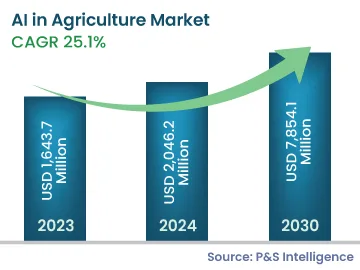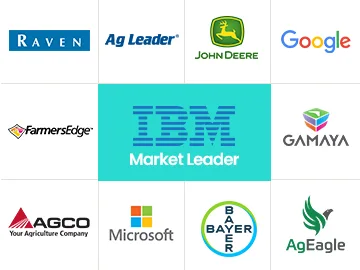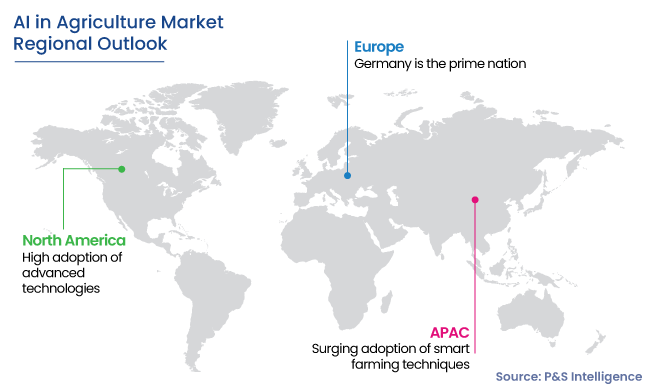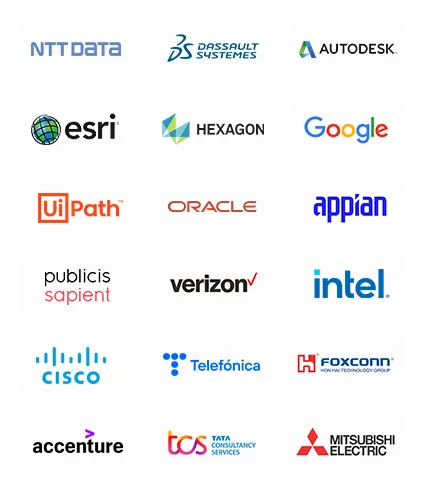What is the size of AI in agriculture market in 2024?+
The AI in agriculture market is expected to reach a value of USD 2,046.2 million in 2024.
What will be the CAGR of the AI in agriculture market during the forecast period?+
During the forecast period (2024-2030), the market for AI in agriculture will propel at a CAGR of 25.1%.
What will be the value of the AI in agriculture market in 2030?+
The AI in agriculture industry will reach a value of USD 7,854.1 million in 2030.
Which regional market is leading the AI in agriculture industry?+
North America is leading the industry for AI in agriculture.
How competitive is the market for AI in agriculture?+
The industry for AI in agriculture is very competitive, with the existence of several international players.
What is the leading application in the AI in agriculture industry?+
Precision farming is the leading application in the AI in agriculture industry.
What is the latest trend in the market for AI in agriculture?+
The increasing utilization of robots in agriculture is the latest trend in the AI in agriculture market.





